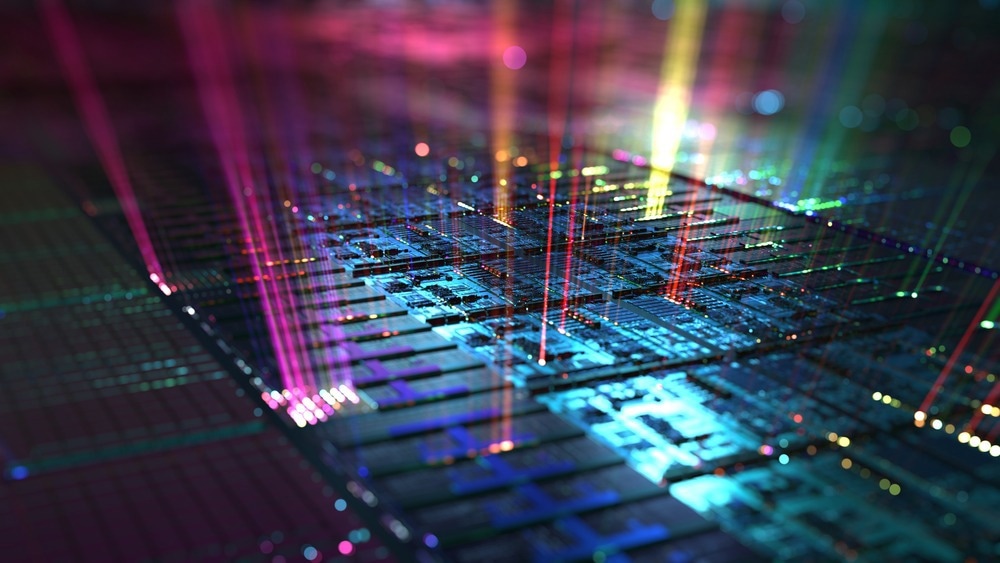Because of their unique physical, photonic, thermal, and electronic capabilities, two-dimensional (2D) nanostructures have exhibited tremendous promise in the domains of bioengineering, sensing, and energy storage.

Study: Two Dimensional Silicene Nanosheets: A New Choice of Electrode Material for High-Performance Supercapacitor. Image Credit: Quardia/Shutterstock.com
Nonetheless, combining silicon-based nanomaterials into high-performance power storage systems remains a largely undeveloped subject because of the complex manufacturing process. New work published in the journal ACS Applied Materials & Interfaces hope to address this problem by effectively integrating silicene nanosheets into a high-voltage supercapacitor.
Importance of Novel Energy Storage Devices
Efficient, sustainable, and cost-effective electrolytic energy collection solutions are crucial for powering electric cars and meeting the ever-increasing requirement for wearable electronic gadgets.
In this context, a supercapacitor is an exceptional energy storage technology and is considered a substitute for lithium-ion batteries. A supercapacitor's high storage density and quick charging-discharging capabilities make it particularly appealing to numerous sectors, including automobiles, airplanes, and telecommunications.
While a supercapacitor cannot hold as much energy as a comparable-sized lithium-ion battery, its exceptional charging speed compensates for this. In certain circumstances, a supercapacitor's charge time is over 1,000 times quicker than a comparable-capacity battery.
2D Nanomaterials: The Future of Energy Storage
Two-dimensional (2D) nanostructures with an ultrathin conducting structure, high electrolytic stability, and customizable electrical characteristics have recently shown great promise in various sectors, including catalysis, biomedical detection, and bioengineering.
Electrodes based on 2D nanomaterials such as graphene, MXenes, and transitional metallic dichalcogenides can equip modern energy storage devices with an electrolytic actuation capability. It has been discovered that the intrinsic benefits of 2D materials not only provide fantastic responsiveness and enhance ion dispersion during repeated charging-discharging cycles.
In contrast to the materials discussed above, the use of silicon-based 2D semiconductors in energy storage devices is quite uncommon. Given their fascinating electrical and ferromagnetic properties, 2D silicon-based semiconductors such as silicene can also be used as a potential competitor to graphene in energy storage applications.
To date, few initiatives in the area of energy storage devices have focused on 2D silicon nanosheets comparable to graphene. Given this perplexing problem, developing unique 2D silicon materials with a high potential for integration into a modern energy storage system, like a supercapacitor, is critical.
Silicene Nanosheets as Electrodes for a Supercapacitor
Silicene is a two-dimensional silicon allotrope with a hexagonal honeycomb structure comparable to graphene. Unlike graphene, silicene has a regularly buckled structure rather than being flat. Because the layer coupling in silicene is substantially stronger than in multilayered graphene, it is ideal for usage in energy storage applications.
Previous studies have shown that silicene produced by the wet chemical technique may be used as anodes for lithium-ion batteries. Furthermore, given its availability and cytocompatibility, silicene's biological properties make it an excellent biomaterial for photo-triggered therapies and medical imaging.
Despite recent breakthroughs in silicene-based batteries and theragnostic medicine, no research attempted to investigate silicene nanosheets as electrodes for a modern energy storage device such as a supercapacitor.
The researchers address this issue by successfully producing few-layer silicene nanosheets and examining the electrochemical capacitance characteristics of silicene experimentally. To test their energy storage capability, the silicene nanosheets were also utilized as cathodes in a high-voltage symmetric supercapacitor.
Important Findings of the Study
For the first time, the researchers produced silicene nanosheets by moderate oxidizing of calcium disilicide and demonstrated their superior electrolytic properties in a high-voltage supercapacitor. The high-voltage symmetric supercapacitor built using silicene nanosheets provides remarkable electrolytic efficiency.
The overall effectiveness of the silicene nanosheet-based high-voltage symmetric supercapacitor surpasses that of the previously reported silicon-based nanomaterials. According to first-principles calculations, thin or few-layer silicene with smaller ion diffusion paths and better active site usage efficiency enhances ion transportation and electron transport rates on the surface of the supercapacitor.
The promising discovery of silicene nanosheets as an excellent model substance for a supercapacitor will hasten the advancement of energy retention and transfer technologies. Based on these results, it is reasonable to expect silicene nanosheets as attractive electrode materials for next-generation energy storage systems.
Reference
Guo, Q. et al. (2022). Two Dimensional Silicene Nanosheets: A New Choice of Electrode Material for High-Performance Supercapacitor. ACS Applied Materials & Interfaces. Available at: https://pubs.acs.org/doi/10.1021/acsami.2c13677
Disclaimer: The views expressed here are those of the author expressed in their private capacity and do not necessarily represent the views of AZoM.com Limited T/A AZoNetwork the owner and operator of this website. This disclaimer forms part of the Terms and conditions of use of this website.